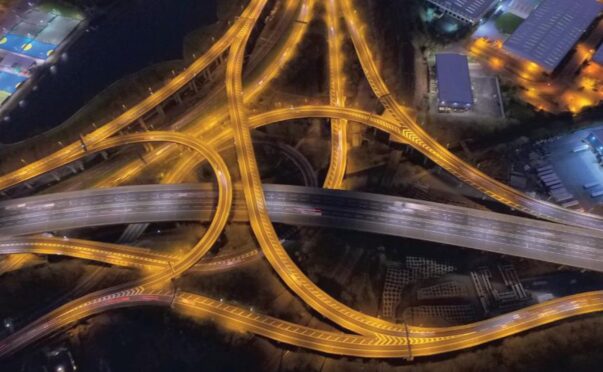As the world tries to tackle the need for sustainable energy solutions, finding an acceptable equilibrium between energy security and this transition is paramount.
-
Some Press and Journal online content is funded by outside parties. The revenue from this helps to sustain our independent news gathering. You will always know if you are reading paid-for material as it will be clearly labelled as “Partnership” on the site and on social media channels.
This can take two different forms.
“Presented by”
This means the content has been paid for and produced by the named advertiser.
“In partnership with”
This means the content has been paid for and approved by the named advertiser but written and edited by our own commercial content team.
In the UK, arguably more than ever before, the sector’s stability is heavily reliant on the need for consistent political leadership and clear energy and fiscal policies, as these provide businesses with the essential certainty and confidence needed to invest.
Energy security remains a top priority for the UK and most countries globally, especially as geopolitical tensions present ever increasing challenges, demands and uncertainties. Traditional energy sources still play a crucial role in meeting global energy demands. However, the urgency to mitigate climate change necessitates a shift towards cleaner alternatives over an achievable and realistic timeframe. This transition requires careful planning, selection and investment in a broad and diverse basket of sources, ranging from the established through to emerging and the futuristic.
Consistency in policy making and regulatory frameworks is essential for fostering an attractive investment environment that encourages both domestic and international players, rewards competition and creates stability. When governments provide clarity on energy and fiscal policies, businesses in a global market can make informed decisions and allocate resources effectively. This stability encourages long-term investment in a harmonised and transitioning blend of traditional and renewable energy infrastructure.
An encouraging and very notable trend in the energy sector is the increasing attention for investment in critical engineering infrastructure. This is a trend that is led by the largest global private equity firms, such as Blackrock who are recognising the potential for significant returns driven by the unstoppable drive for decarbonisation and digitalisation. As the world moves towards cleaner energy sources and embraces digital technologies, investments in engineering infrastructure become indispensable.
In our own back yard, the UK is developing a strong portfolio of renewable technology platforms with investments committed and deployed into CCS, hydrogen, on and offshore wind, battery storage, wave & tidal and clean fuel projects.
Renewable projects have certainly been influential in the decision making of many active acquirers in the space as they seek to expand their service offering. Notable completed transactions include Storegga, the decarbonisation project developer, closing its fourth funding round, raising additional investment from existing shareholders GIC and Macquarie together with fresh investment from ADNOC. SCF Partners acquiring the engineering and procurement specialist Global E&C from Roy MacGregor’s Global Energy Group.
Post completion, Global E&C is part of the newly formed decarbonisation platform, D2Zero whic also includes Hydrasun, Score Group, Fuel Cell Systems and Powerstar. In addition, RSK acquired the engineering house PD&MS and CCS specialist Axis Well Technology facilitating exits from their respective PE firms, Inflexion and Elysian Capital.
In amongst arguably the biggest global issues of conflict and climate change, the energy sector’s role in driving sustainable development and fostering global stability cannot be overstated. By balancing energy security with the transition to renewables, investing in critical engineering infrastructure, and providing consistency in political leadership and policy frameworks, nations can navigate the complexities of the upstream energy sector effectively.
The spaghetti junction facing the energy sector in 2024, includes the need to balance energy security and transition to renewables. Consistent political leadership and clear energy policies are essential for providing businesses with the certainty and confidence needed to invest.
The scale of private equity investment in critical engineering infrastructure reflects an unstoppable trend of decarbonisation and digitalisation. As the UK elections and global challenges, ensuring certainty and confidence in the energy sector is paramount for driving sustainable development and global stability.

